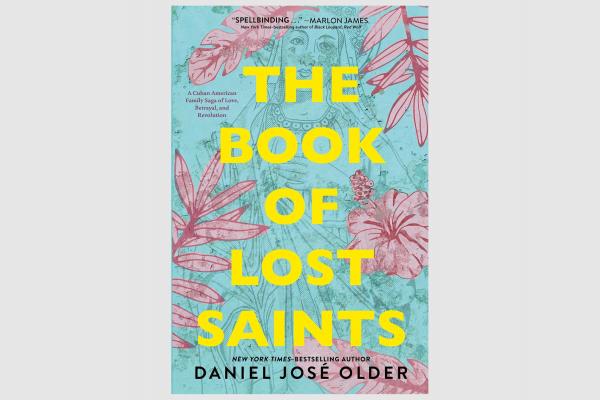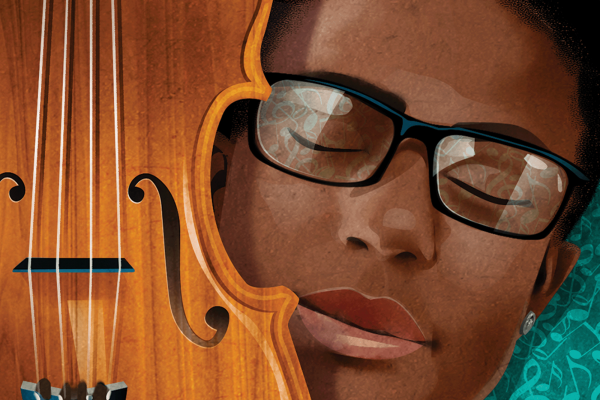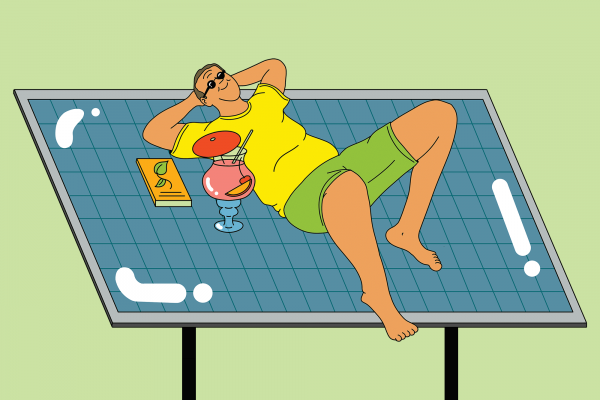“So, are you going to pick up arms and go fight in the jungle?” she asked me pointedly, looking directly into my eyes.
The question caught me off guard.
I threw my hands up defensively and replied, “Umm ... no? No. That’s not what I meant!”
We were in the city of Popayán. I had taken a break from my seminary studies in North Carolina to join a peace delegation in Colombia. And J. — who asked me the question — was a local activist. She was associated with a chapter of Ruta Pacífica de las Mujeres, a feminist organization committed to pacifism and anti-militarism, and known for having members who were unafraid to protest while shirtless, whether in street marches or in disruptions of male-dominated panel events at the university.
Earlier that day, J. gave a presentation in which she critiqued carceral, or prison-centered, approaches to justice. She also revealed that members of her collective were in dialogue with women inside the Fuerzas Armadas Revolucionarias de Colombia (FARC). FARC’s leadership, which was predominately male, was in Havana, Cuba at that time, negotiating a peace agreement with the Colombian government.
We mingled with Ruta Pacífica activists after the presentation. In the process of introducing myself to J., I mentioned I was a seminary student and said something along the lines of, “Me gusta la teología de la liberación.”
Instead of receiving a symbolic pat on the back, I was met with an examining look. Suddenly, I felt that my language of liberation carried a weight, an accent, here that it did not carry over there where I discussed liberation in a classroom.
I had heard about Camilo Torres Restrepo, the revolutionary Roman Catholic priest who died as a guerrillero in a Colombian jungle in 1966. But I didn’t know much about him. I didn’t know that before Camilo joined Ejército de Liberación Nacional (ELN), many assumed he would lead the coalition known as El Frente Unido in an electoral path to address the nation’s inequalities. I didn’t know that ELN’s early leadership, which trained with Cuban revolutionaries and adopted the language of liberation theology, would consume itself. That Jaime Arenas Reyes, who led one of the biggest student strikes in Colombian history, and who joined ELN but later distanced himself over ideological differences, would be shot in the back by ELN members in the middle of Bogotá.
I was starting to realize that Colombia’s violence was more complicated than I'd imagined.
“I’m not sure what you’re thinking,” I said to J. as I laughed nervously.
She didn’t laugh.
“I’m not that kind of liberation theologian,” I pleaded.
Ending her prolonged silence, J. responded: “Okay, good. Just wanted to make sure.”
*
I thought back to this experience in Colombia when I read Daniel José Older’s novel The Book of Lost Saints. It’s a powerful meditation on love and betrayal in times of revolution. It’s also the quintessential all-American tale involving a Tri-state kid haunted by an ancestor from the Caribbean.
The novel’s narrator is a ghost named Marisol who disappeared during the Cuban Revolution. She’s not sure how she died and her spirit is slowly fading into nothingness. Marisol’s only hope for finding out what happened is her nephew, Ramón, who lives in New Jersey.
Ramón is dating a doctor, but he's self-conscious that he works as a security guard at her hospital. One thing going well for him is music. He DJs at the local club and is becoming quite popular for his mixes. However, his artistic pursuits are interrupted by an old gangster named Enrique, who sends his henchmen to recruit Ramón for outreach work in his organization. While Marisol is determined to piece her story together, she’s quickly absorbed by Ramón’s drama and tasks herself with keeping him safe.
Marisol haunts Ramón in his dreams, and occasionally by leaving a family photo album open on his nightstand. Through his mind, Marisol is able to revisit intense flashbacks recounting her life in Cuba. We see her as a young woman, discovering that one of her sisters, Isabel, is smuggling weapons for the overthrow of Fulgencio Batista’s U.S.-backed dictatorship. Her sister expresses a fervent hope, “The yanquis won’t own our sugar anymore, won’t own us anymore, and they’ll have to rewrite all the history books to sing about our victory.”
The book’s language playfully weaves in Spanish to produce insights and jokes that couldn’t happen in a monolingual framework. Its scenes move back and forth between Cuba and New Jersey circa the 2000s. In his apartment, Ramón begins recording his strange dreams in a journal. He asks his mom and relatives questions about his family history and what happened during the revolution. Like any child with family recovering from the trauma of living through large-scale political violence, Ramón confronts silences and half-truths that have left him confused.
“All I’ve wanted was for you to explain,” Ramón tell his mom on the phone. “Pero no se puede!” she yells. Marisol, who is hovering over the conversation, and who otherwise holds a mysterious grudge against her sister Nilda (Ramón’s mom), agrees. Ramón can’t understand. Marisol can reconstruct memories within Ramón but can’t give him the experience of living through it.
Ramón takes a trip to Cuba where he tries to learn more about what happened to his aunt. He finds bureaucratic red tape, disinformation, and some potential leads. His dreams intensify: he gets flashbacks about Marisol fighting in the jungle, Marisol in solitary confinement. She recalls a trial in which she was charged with being “a traitor to the Revolution, an instigator, imperialist bitch.”
Within these painful dreams, Ramón sees a recurring light named Padre Sebastian. He is a handsome Roman Catholic priest who mentors Marisol and helps her look for her sister Isabel when she disappears. Padre Sebastian appears to be involved in one of the revolutionary factions, but when the new revolutionary government takes over and restricts religion, he finds himself in the same prison as Marisol.
In prison, Padre Sebastian encourages Marisol by talking about a book she had previously seen in his library. Las vidas de los santo. Padre Sebastian talks about complicated figures like St. Augustine but points out to Marisol that God’s saints don’t always get canonized or remembered.
Padre Sebastian’s book, in one sense, stands in for all of those who disappear, for the acts of love and kindness that aren’t recorded. In another sense, the placement of this priest’s book within the novel is ironic. The Book of Lost Saints contains no saints. Every figure, from Cuba to New Jersey, wrestles with the moral ambiguities of their decisions.
As Marisol puts it: “There was no right answer back in those hazy, hot days of the revolution. There was only despair and betrayal, which led into each other in a never-ending loop. Nilda chose one and I the other and we both ended up in the same place: fucked.”
I won’t spoil the novel’s surprises. But what’s clear throughout is the strain that revolutionary fervor places on relationships. Absolute quests for political purity inevitably result in betrayal and cannibalization. And those who live under such regimes are dealt impossible choices. Sister turns against sister. Parents turn against children. Firing squads blow people’s heads off on live national television. Marisol witnesses a multifaced rebellion collapse into “one, singular force.” When the revolution “succeeds,” some who led the charge — such as Huber Matos and Camilo Cienfuegos — are taken into custody or mysteriously vanish.
Thinking back to her death, Marisol observes at one point: “I don’t know if it was the fallen regime or the one that replaced it. Does it even matter? They all start to look alike from here.”
The Book of Lost Saints critiques the authoritarian direction of Cuba’s revolutionary government. At the same time, it holds a mirror to the reactionary right-wing politics of some Cuban-Americans. This is best exemplified by Enrique, the gangster who’s recruiting Ramón to help him politically reach “the youth.” Ramón sees Enrique, who’s funded terror stunts and whose mansion displays framed pictures of George Bush and Henry Kissinger, as a withered clown.
Ultimately, the violence in the book isn’t contained in Cuba but runs north and south, sometimes materializing as real estate development and police brutality in New Jersey. It’s a contagion and its corrosive nature easily switches hands. In one vengeful fantasy, Marisol imagines herself becoming fire and laughing while she burns people around her, even as she succumbs to her own flames.
In addition to violence and betrayal, the novel raises important questions about forgiveness and inter-generational healing. What are the risks of digging deeply into the past? Can people truly change? When families live through, escape from, or are adjacent to the unimaginable, what do their children do with this inheritance?
During Ramón’s trip to Cuba, he DJs at an illegal party for “all the gays in Havana,” in the basement of the Gran Teatro. Marisol becomes overwhelmed, not by an intense flashback but by Ramón’s joy for music. His own dreams and aspirations press against her spirit’s consciousness. Then, when police break up the party and Ramón gets hurt, Marisol questions if she has selfishly burdened him with her own nightmares, putting him in harm’s way. She asks, “And why? To goad him into finding my own corpse? To close some absurd, meaningless loop, end an already closed chapter … What right have I?”
Marisol and Ramón’s relationship is a memorable one, displaying nightmares, hopes, betrayals, and loves that float through generations and across borders. It made me think about the histories that haunt me, and about my own relationship to my ancestors. My lost saints.
Got something to say about what you're reading? We value your feedback!







